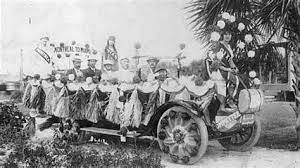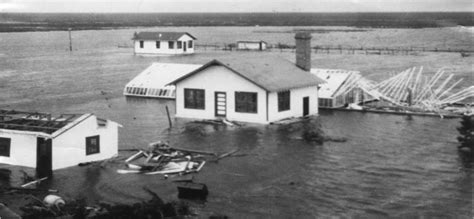Two million buyers paid the price for their naiveté when the 1920s land boom collapsed
[shopping_cart_button text=”Bubble In the Sun” Review by Christopher Knowlton”=”Buy Now” url=https://www.amazon.com/gp/product/1982128380?ie=UTF8&linkCode=ll1&tag=historynet02-20&linkId=762647e534677552100f84a233fa3dd5&language=en_US&ref_=as_li_ss_tl”]
“The past is never dead,” William Faulkner wrote in Requiem for a Nun. “It’s not even past.” That certainly is so in Florida, setting of Christopher Knowlton’s brilliant, often grotesque account of speculation mania there during the 1920s. Bizarre click-inducing schemes involving “Florida Man” today refract the hucksterism of the developers who suckered more than two million Americans into trying life in the Sunshine State a century ago.

Few groups had a greater influence on Florida’s development than “the tin can tourists” who arrived by automobile and truck, loaded with tents and food supplies. (Florida Internet History Center)
Between the end of World War I and the collapse in 1927 of the region’s real estate market, a battalion of hustlers parceled out hunks of the Everglades to anyone with a down payment. Many middle class migrators saw their savings dissolve like sugar in water as home values in Florida’s profoundly overbuilt housing market tanked. Standout characters include Tampa developer D.P Davis, who in hours unloaded hundreds of lots without telling buyers their properties were underwater. Carl Fisher almost single-handedly invented Miami Beach with sand hauled from Biscayne Bay. Charles Ponzi of pyramid scheme notoriety even shows up, double-crossing dupes in Jacksonville after serving five years in federal prison for mail fraud. When Florida prosecutors sniffed out his real estate scam, Ponzi skipped town, faked his death, and, masquerading as a sailor, headed for Houston aboard a freighter.
Knowlton, author of one of 2017’s best history books, Cattle Kingdom: The Hidden History of the Cowboy West, juxtaposes economic and cultural history in as engaging a fashion as anyone writing today. The major strike against this otherwise excellent work is the author’s disinclination to justify his ballyhoo-ridden subtitle, which seems to be more Florida-grade logrolling than substance. If anything, the author demonstrates that the Florida land market’s overheated exuberance reflected national trends rather than being the straw that stirred the dizzy drink. He is not breaking ground—Kenneth Ballinger’s Miami Millions (1936) was the first of many excellent titles in this category—but his take may lead the league. Knowlton’s eye and ear for compelling characters and his masterful narrative gifts make Bubble in the Sun the new gold standard on the old bait-and-switch. —Clayton Trutor teaches U.S. History at Norwich University in Northfield, Vermont. He tweets as @ClaytonTrutor.

